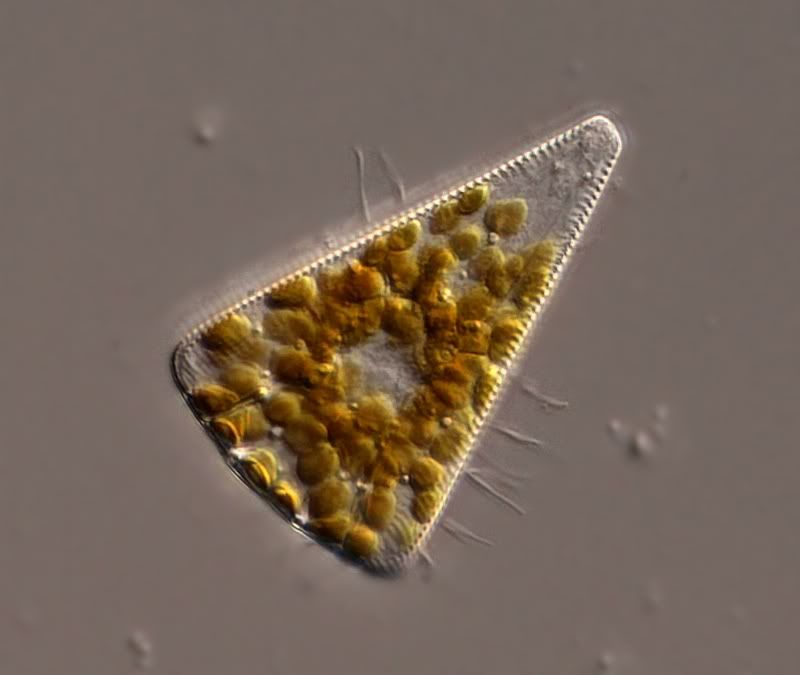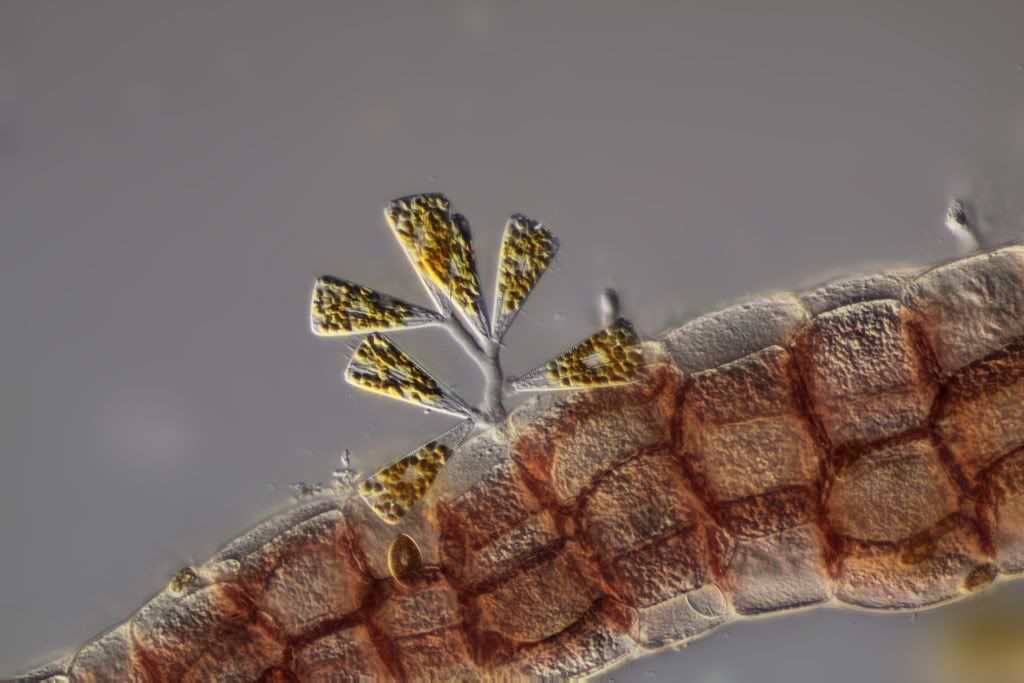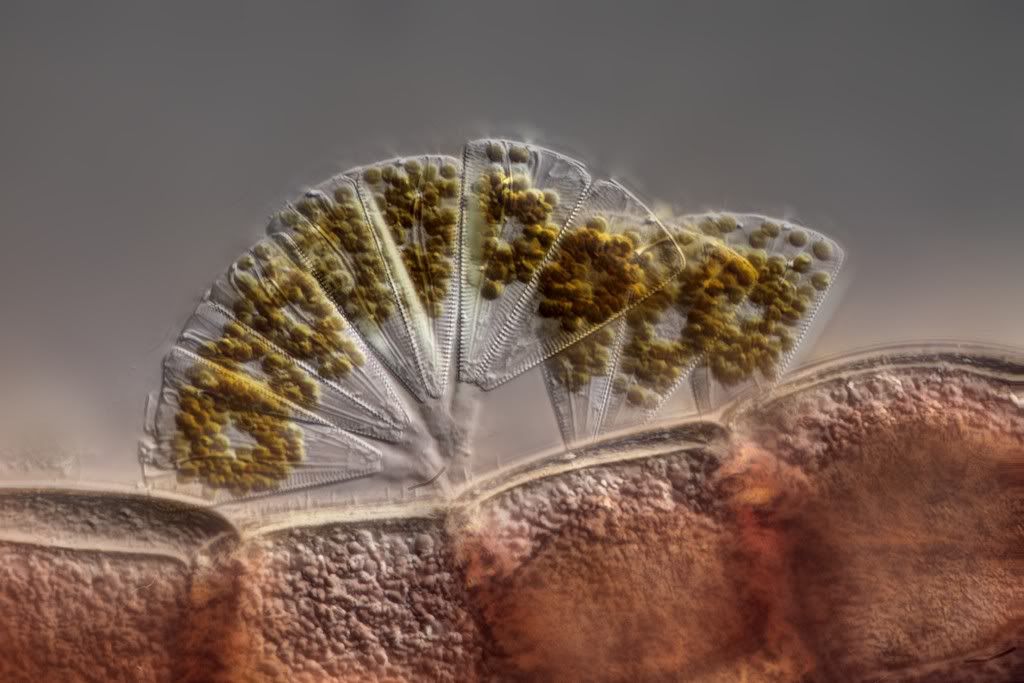Charles Krebs wrote:Hi Chris...
Licmophora (genus)?
Thanks Charles! A quick google search provides some excellent images of these diatoms in similar colonial formations (the best of which have been taken by members of this forum

) - they sure are photogenic!
Cactusdave wrote:A couple of questions Chris. I assume both these excellent high NA lenses are oil immersion and this is a Zeiss setup? I wonder how you achieved such tiny focus increments to need 178 in the final stack with the X63 PLanapo? I would have thought that even with the smallest division increment on the fine focus, that 178 of these would have more than focused right through the subject, at this magnification.
You are correct Dave, both of these lenses are oil immersion and they are on my Zeiss Axiovert 200M stand (see
here for details on the set up). My stand is entirely motorized and driven by the Zeiss software, Axiovision, so it can step down to the nm range - if my memory serves, I believe I acquired the 63x images at 240nm intervals, for a total depth of approximately 43 microns. This depth certainly fits with the diameter of the
Ceramium. I hope this helps to answer some questions.
Cheers!
Chris
Shamefully, I forgot to mention earlier that these stacks were compiled with Zerene Stacker PMax and then were cleaned up to reduce background clutter and dust spots.



